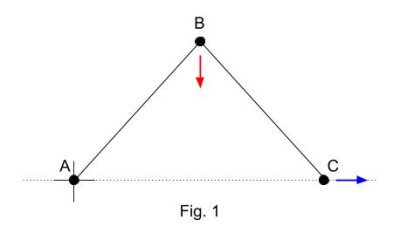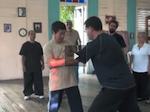Not Moving is one of the most important concepts in Practical Method. There are 3 types of Not Moving.
Absolutely Not Moving
- Also known as: Truely Not Moving
- This point is simply not allowed to move in any way.
- Example: A nail on the wall. The nail is not moving in any direction.
Relatively Not Moving
- Also known as: Structurally Not Moving
- Between two points, a constant relationshiop is maintained.
- Example: A passenger seating in the car going from place to place. The passenger is not moving relative to the car.
Restrictively Not Moving
- Also known as: Staying on the track
- This point is only allowed to move in a very specific way.
- Example: A train can only move along the track. It works properly only when it does not derail.
Let’s illustrate using Fig. 1.
Point A is absolutely not moving as it is not allowed to move at all.
Point B is relatively not moving as it’s relationship with A and C respectively is fixed to the solid stick in between.
Point C is restrictively not moving as it is only allowed to move along the AC line.
If we pull point C to the right, point B will be affected indirectly and come down while A does not move at all. In fact, B will rotate around A as a result.




{ 1 comment… read it below or add one }
Excellent article! Thanks Kelvin!